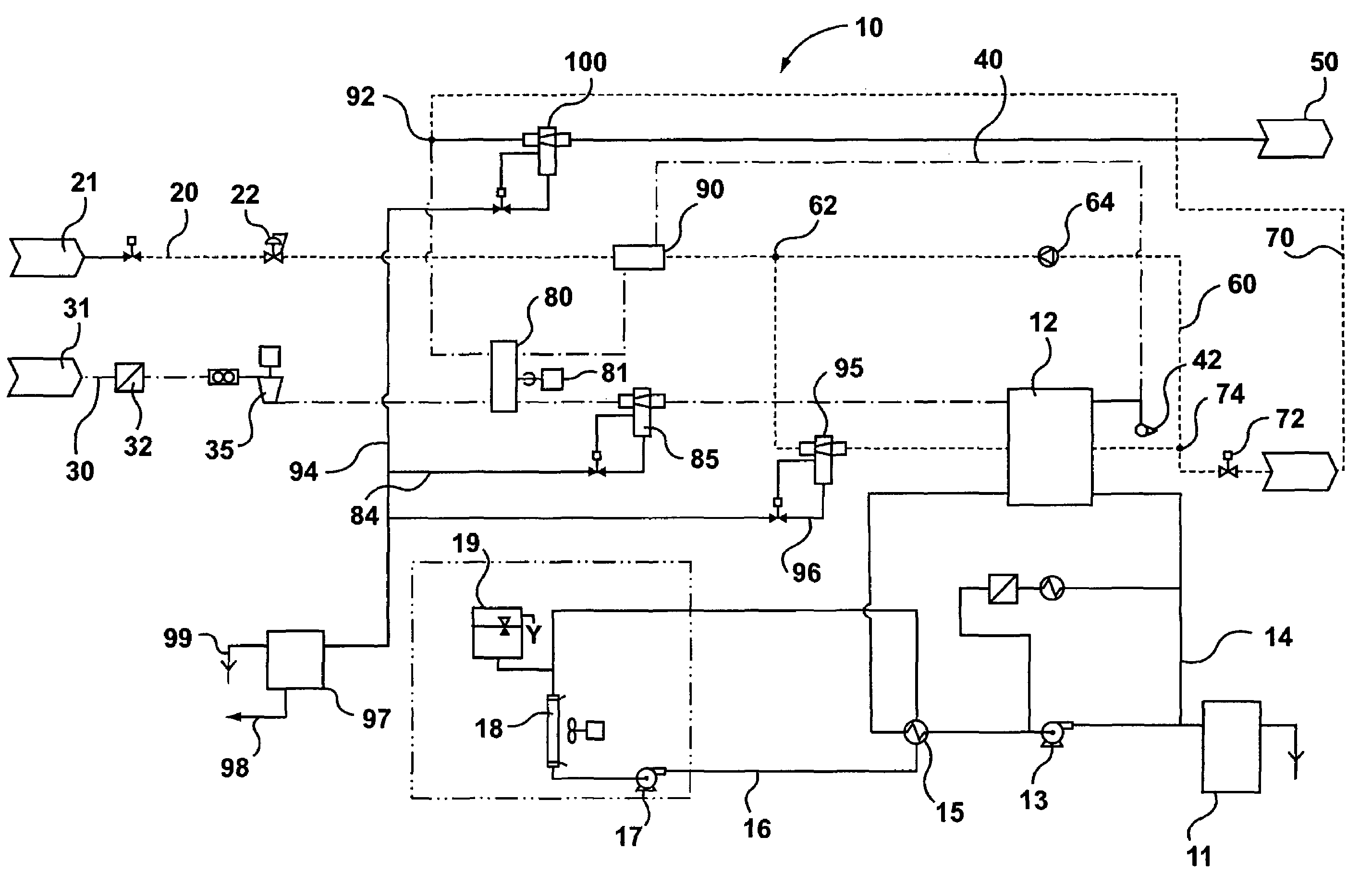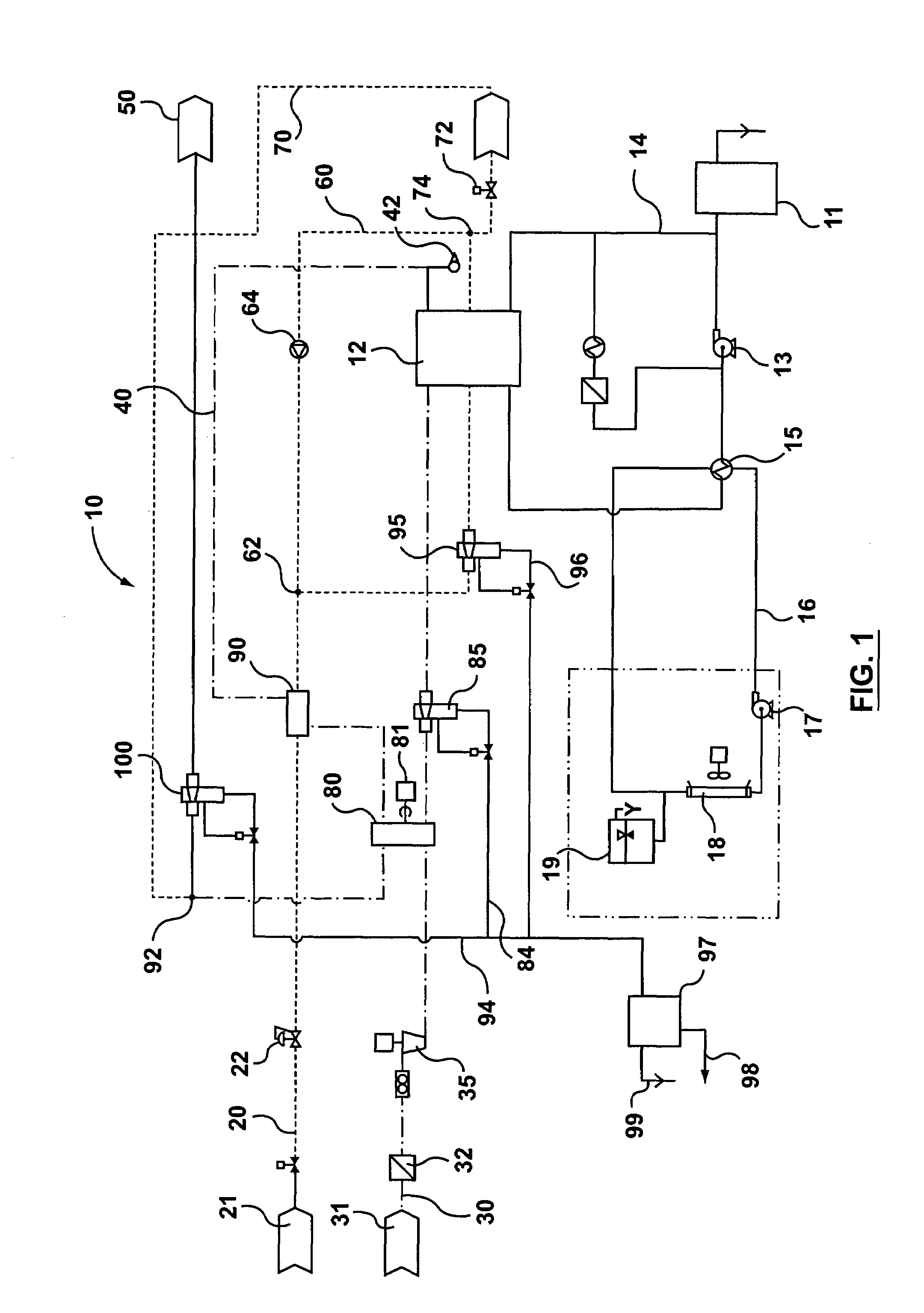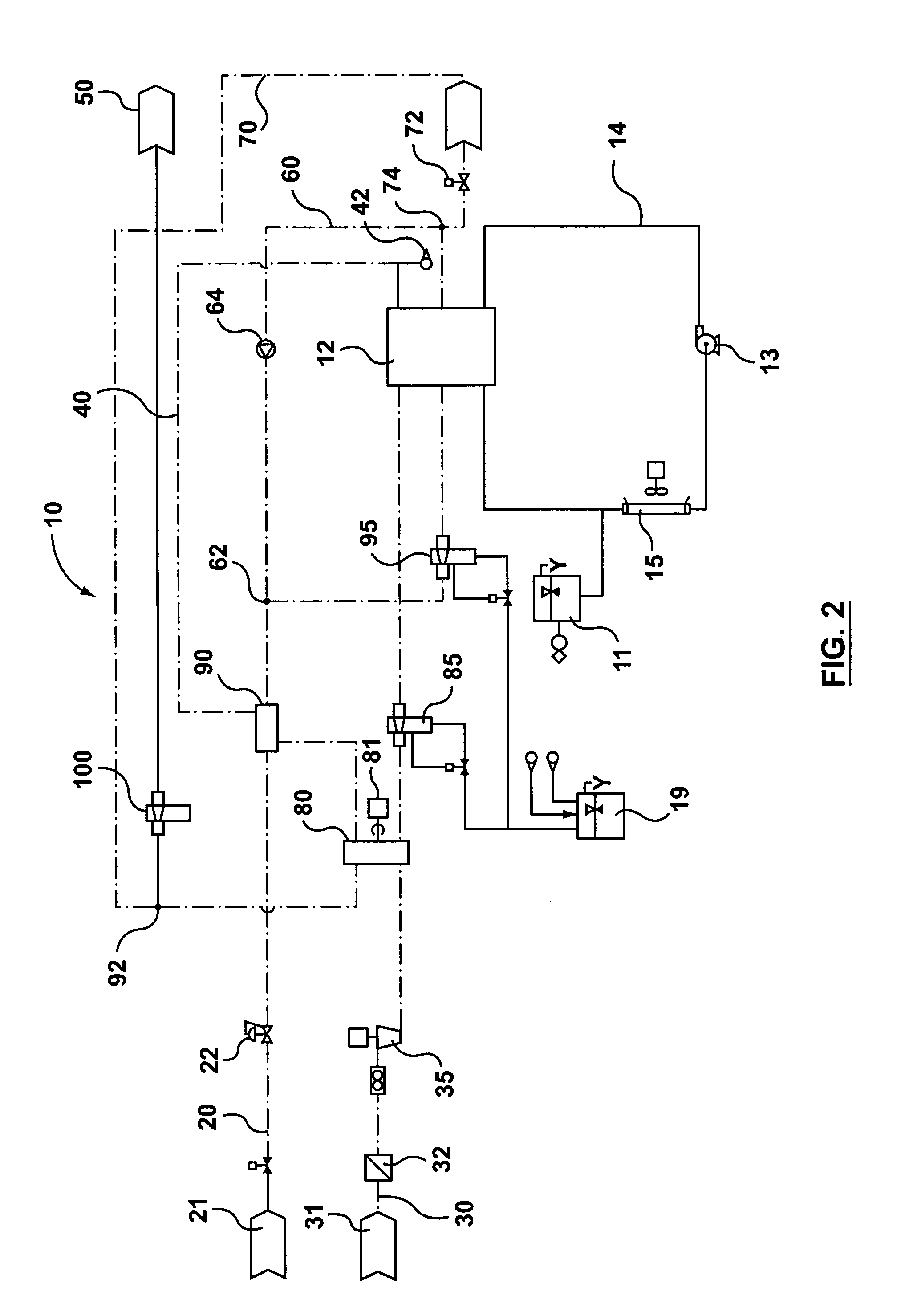System and method for management of gas and water in fuel cell system
a fuel cell and process gas technology, applied in the direction of fuel cells, electrical equipment, electrochemical generators, etc., can solve the problems of inadequate humidification levels, difficult to ensure the efficiency of the fuel cell stack under all the possible operating conditions, and dry out, so as to reduce the weight and number of components, the overall system is compact and the effect of high efficiency
- Summary
- Abstract
- Description
- Claims
- Application Information
AI Technical Summary
Benefits of technology
Problems solved by technology
Method used
Image
Examples
first embodiment
[0027]Referring first to FIG. 1, this shows a schematic flow diagram of a fuel cell gas management system 10 according to the present invention. The fuel cell gas management system 10 comprises a fuel supply line 20, an oxidant supply line 30, a cathode exhaust recirculation line 40 and an anode exhaust recirculation line 60, all connected to a fuel cell 12. It is to be understood that the fuel cell 12 may comprise a plurality of fuel cells or just a single fuel cell. For simplicity, the fuel cell 12 described herein operates on hydrogen as fuel and air as oxidant and can be a Proton Exchange Membrane (PEM) fuel cell. However, the present invention is not limited to this type of fuel cells and applicable to other types of fuel cells.
[0028]The fuel supply line 20 is connected to a fuel source 21 for supplying hydrogen to the anode of the fuel cell 12. A hydrogen humidifier 90 is disposed in the fuel supply line 20 upstream from the fuel cell 12 and an anode water separator 95 is disp...
second embodiment
[0047]In the second embodiment, similar components are indicated with same reference numbers, and for simplicity and brevity, the description of those components is not repeated.
[0048]In this second embodiment, a high pressure compressor 105 is provided in the oxidant supply line 30 upstream from the enthalpy wheel 80 to pressurize the incoming air from the air filter 32. An after cooler heat exchanger 110 is provided between the compressor 105 and the enthalpy wheel 80 to cool the compressed air having an elevated temperature. Hence, in addition to the cooling loop 14 for the fuel cell 12, an additional cooling loop 114 is provided including a water-water heat exchanger 110 and a coolant tank 111. The cooling loop 114 may also run through the compressor motor 106, compressor motor controller 107 and other power switching board 108 for the compressor 105. The coolant in both cooling loops 14 and 114 is driven by the pump 13. A heat exchanger 108 can be provided in the loop 114 for c...
PUM
| Property | Measurement | Unit |
|---|---|---|
| flow rate | aaaaa | aaaaa |
| enthalpy | aaaaa | aaaaa |
| heat | aaaaa | aaaaa |
Abstract
Description
Claims
Application Information
 Login to View More
Login to View More - R&D
- Intellectual Property
- Life Sciences
- Materials
- Tech Scout
- Unparalleled Data Quality
- Higher Quality Content
- 60% Fewer Hallucinations
Browse by: Latest US Patents, China's latest patents, Technical Efficacy Thesaurus, Application Domain, Technology Topic, Popular Technical Reports.
© 2025 PatSnap. All rights reserved.Legal|Privacy policy|Modern Slavery Act Transparency Statement|Sitemap|About US| Contact US: help@patsnap.com



